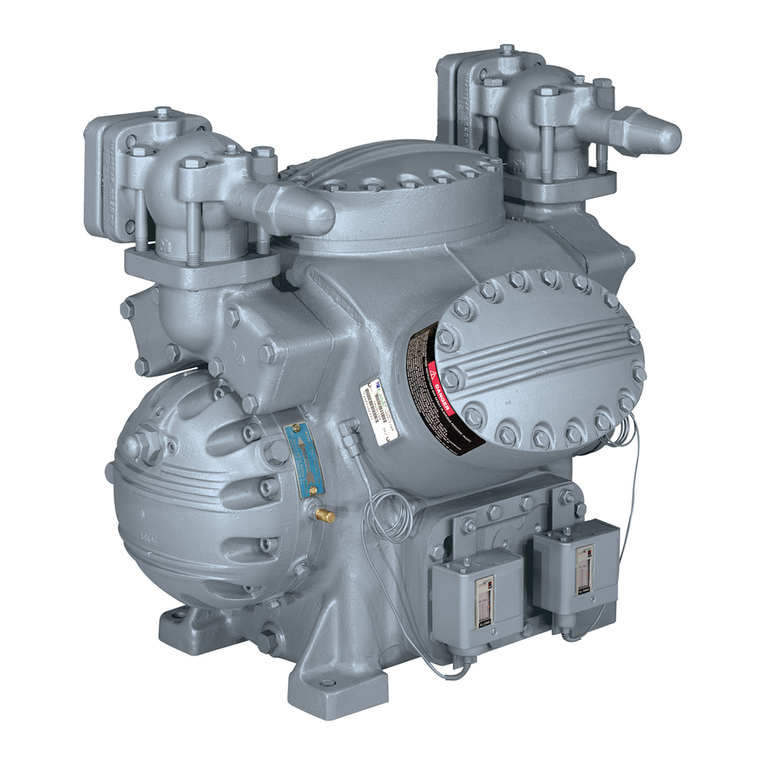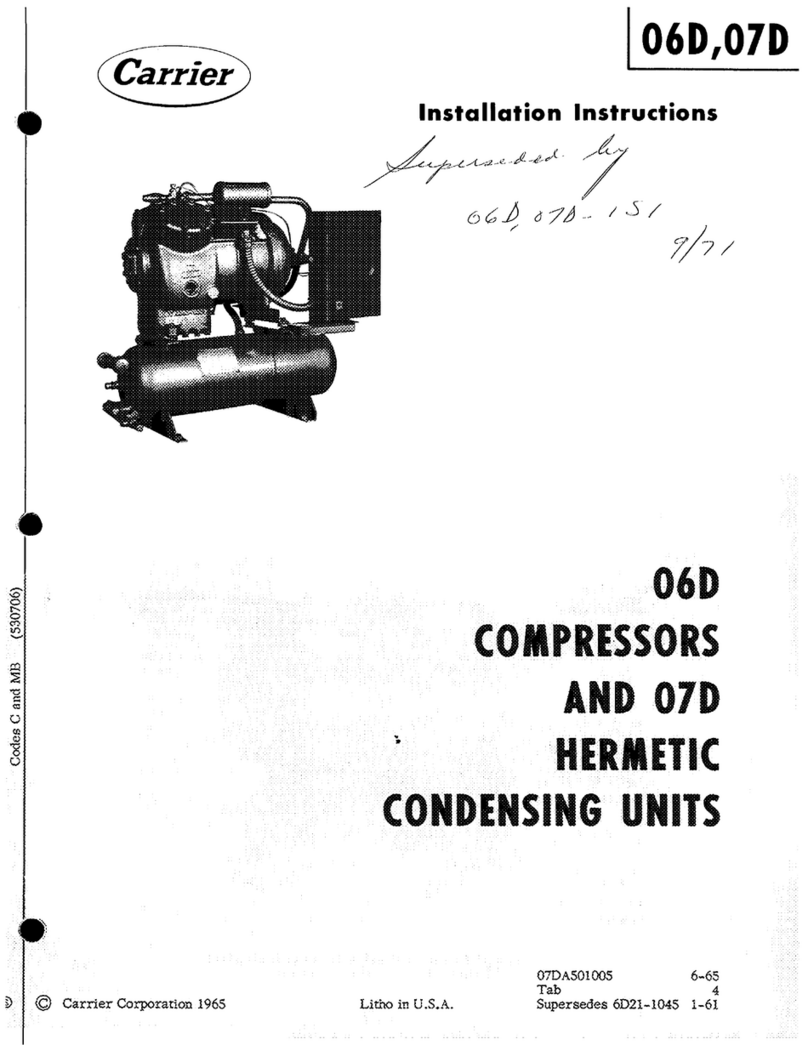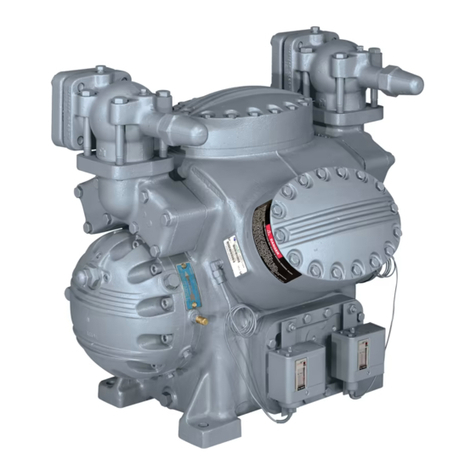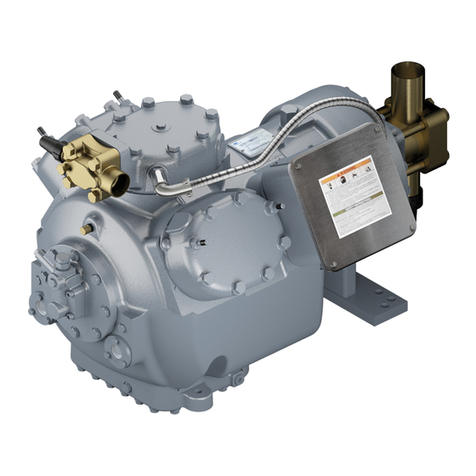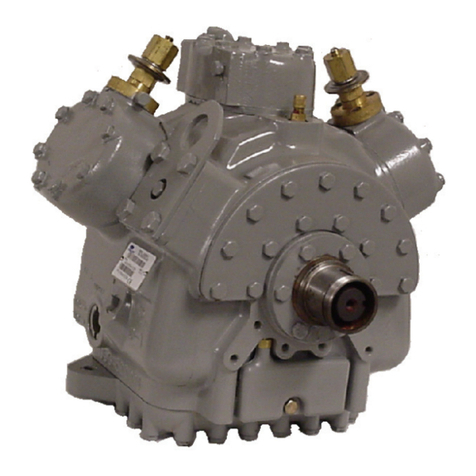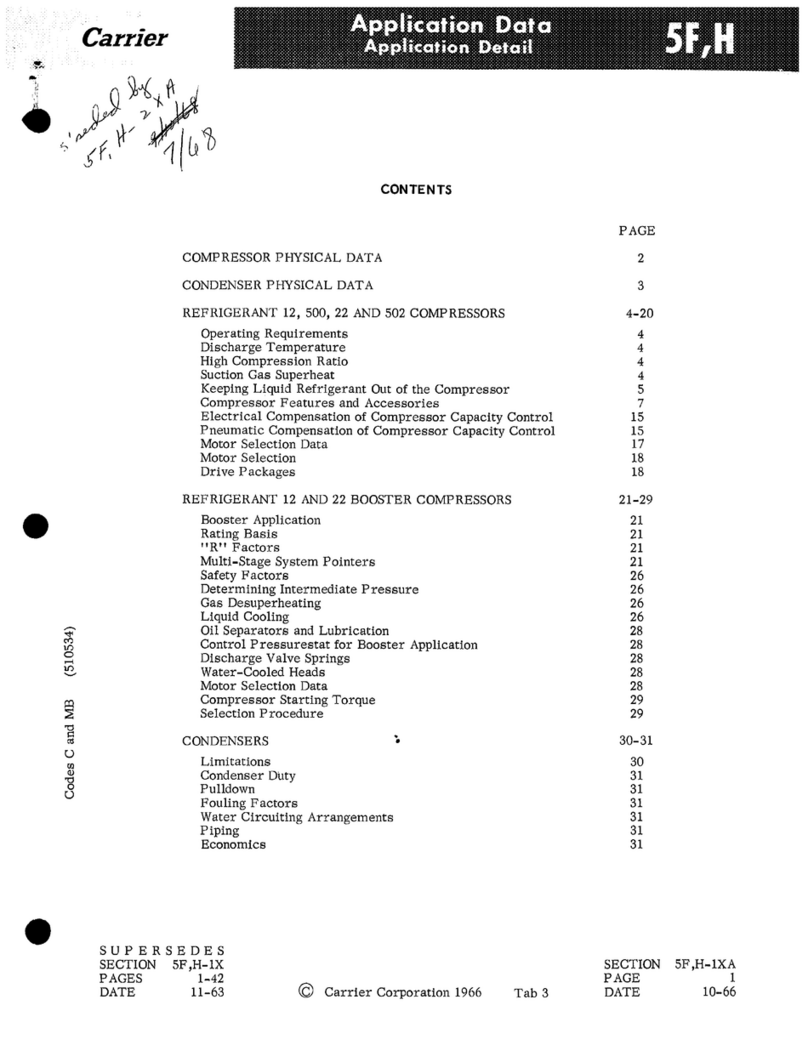
4
1 - INTRODUCTION
Prior to the initial start-up of the 30HXC/GX units, the people
involved in the on-site installation, start-up, operation, and
maintenance of this unit should be thoroughly familiar with these
instructions and the specific project data for the installation site.
The 30HXC/GX liquid chillers are designed to provide a very
high level of safety during installation, start-up, operation and
maintenance. They will provide safe and reliable service when
operated within their application range.
This manual provides the necessary information to familiarize
yourself with the control system before performing start-up
procedures. The procedures in this manual are arranged in the
sequence required for machine installation, start-up, operation
and maintenance.
Be sure you understand and follow the procedures and safety
precautions contained in the instructions supplied with the
machine, as well as those listed in this guide.
1.1 - Installation safety considerations
After the unit has been received, when it is ready to be installed
or reinstalled, and before it is started up, it must be inspected
for damage. Check that the refrigerant circuit(s) is (are) intact,
especially that no components or pipes have shifted (e.g. follow-
ing a shock). If in doubt, carry out a leak tightness check and
verify with the manufacturer that the circuit integrity has not
been impaired. If damage is detected upon receipt, immediately
file a claim with the shipping company.
Do not remove the skid or the packaging until the unit is in its
final position. These units can be moved with a fork lift truck,
as long as the forks are positioned in the right place and
direction on the unit.
The units can also be lifted with slings, using only the desig-
nated lifting points marked on the unit.
These units are not designed to be lifted from above. Use
slings with the correct capacity, and always follow the lifting
instructions on the certified drawings supplied with the unit.
Safety is only guaranteed, if these instructions are carefully
followed. If this is not the case, there is a risk of material
deterioration and injuries to personnel.
Never cover any safety devices.
This applies to the valve in the hydronic circuit and the valve(s)
in the refrigerant circuit(s) .
Ensure that the valves are correctly installed, before opera-
ting the unit.
Provide a drain in the discharge circuit, close to each valve,
to avoid an accumulation of condensate or rain water.
Ensure that no refrigerant can escape at the safety valves into
the building interior. The outlet from relief valves must be
vented outdoors. Ensure good ventilation, as accumulation of
refrigerant in an enclosed space can displace oxygen and
cause asphyxiation or explosions.
Inhalation of high concentrations of vapour is harmful and
may cause heart irregularities, unconsciousness, or death.
Vapour is heavier than air and reduces the amount of oxygen
available for breathing. These products cause eye and skin
irritation. Decomposition products are hazardous.
1.2 - Equipment and components under pressure
These products incorporate equipment or components under
pressure, manufactured by Carrier or other manufacturers. We
recommend that you consult your appropriate national trade
association or the owner of the equipment or components under
pressure (declaration, re-qualification, retesting, etc.). The
characteristics of this equipment/these components are given
on the nameplate or in the required documentation, supplied
with the products.
1.3 - Maintenance safety considerations
Engineers working on the electric or refrigeration components
must be authorized and fully qualified to do so (electricians
trained and qualified in accordance with IEC 60364 Classifica-
tion BA4).
All refrigerant circuit repairs must be carried out by a trained
person, fully qualified to work on these units. He must have
been trained and be familiar with the equipment and the
installation.All welding operations must be carried out by
qualified specialists.
Never work on a unit that is still energized.
Never work on any of the electrical components, until the
general power supply to the unit has been cut using the
disconnect switch(es) in the control box(es).
If any maintenance operations are carried out on the unit,
lock the power supply circuit in the open position ahead of
the machine.
If the work is interrupted, always ensure that all circuits are
still deenergized before resuming the work.
ATTENTION: Even if the compressor motors have been
switched off, the power circuit remains energized, unless the
unit or circuit disconnect switch is open. Refer to the wiring
diagram for further details. Attach appropriate safety labels.
Once a year check that the high-pressure safety switch is
correctly connected and that it cuts out at the correct value.
At least once a year thoroughly inspect the protection devices
(valves). If the machine operates in a corrosive environment,
inspect the protection devices more frequently.
Regularly carry out leak tests and immediately repair any leaks.
